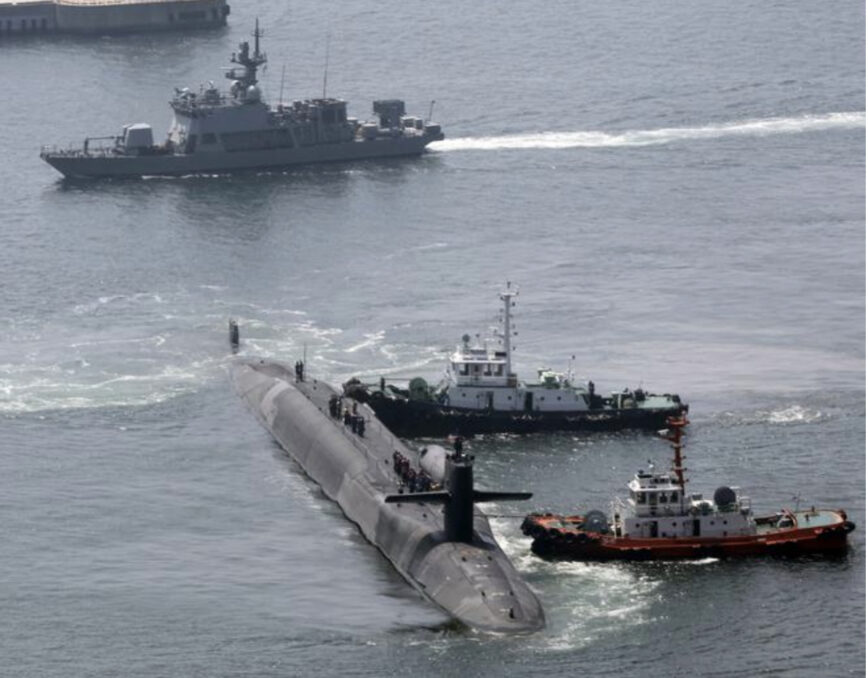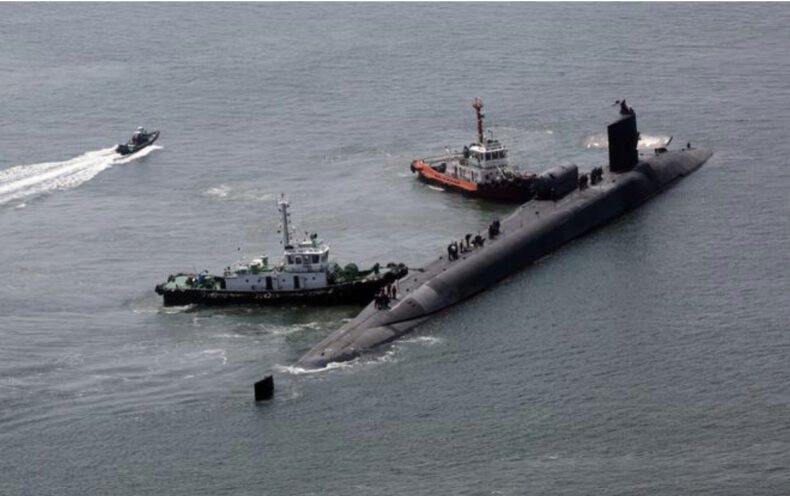On June 16, A nuclear-powered submarine called USS Michigan was deployed by the United States to South Korea, which has the capacity of holding about 150 Tomahawk missiles. It is one of the most significant submarines in the world. This move was made a day after North Korea restarted its missile test in response to the US, and South Korea live fire drills. The Ohio-class guided-missile submarine features a range of about 2500 km and can launch special forces missiles.

According to South Korean officials, the arrival of USS Michigan in South Korea for the first time in six years is in cognizance of a recent bilateral agreement on regular visibility of strategic assets of the US to the Korean Peninsula, in light of North Korea’s progressing nuclear program.
The South Korean Defence Ministry stated that With the USS Michigan, being deployed, the US and South Korean navies will be conducting drills to enhance their special operations capabilities and their joint capacity to counter nuclear threats from North Korea. The ministry informed that the submarine arrived at the south-eastern port of the city of Busan, however, the duration of its stay in the South Korean waters was not stated.

The military exercises of the US and South Korea have been expanding owing to North Korea’s threatening missile tests since last year. On the other hand, North Korea has justified its increase in testing activities by arguing that it is to cope with the expanded military drills of its rivals, which it considers as an invasion rehearsal. However, experts believe that North Korea aims to enhance and modernize its arsenal, to boost its leverage in future diplomacy.
US President Joe Biden and South Korean President Yoon Suk Yeol met in Washington in April, whereby an agreement on enhancing the regular visibility of US strategic assets to the Korean Peninsula was made. President Biden also stated that any nuclear provocation by North Korea on the US or its allies would ‘result at the end of whatever regime’ took such steps.
Both the leaders announced other measures to boost joint deterrence capacities, such as increasing joint training exercises; periodical docking of US nuclear ballistic missile submarines in South Korea; and the formation of a new nuclear consultative group. The nuclear ballistic missile submarine has not reached South Korea yet.
The summit of the US and South Korean leaders and the agreements reached were heavily criticized by Kim Yo Jong, the powerful sister of the North Korean dictator, Kim Jong Un, stating that the agreement shows the most hostile and aggressive will of action of the two nations against North Korea. She noted that the nuclear forces of her country will be further bolstered.
On June 15 to short range, ballistic missiles were launched by North Korea off its east coast shortly after it promised to respond to the US -South Korea firing drills which were conducted near the heavily armed border between the Koreas.
Those missiles were the first weapons North Korea launched since it attempted to install its first spy satellite into orbit in late May. Its attempt failed as the rocket that was carrying the spy satellite crashed and fell into the water off the west coast of the Korean peninsula.
The Defence Ministry of South Korea reported on June 16 that through the military search operations that were conducted, a part of what is believed to be the crashed North Korean rocket has been found. Photos of the white, metal cylinder were released by the ministry. Some experts assume that it could be the fuel tank of the rocket.













